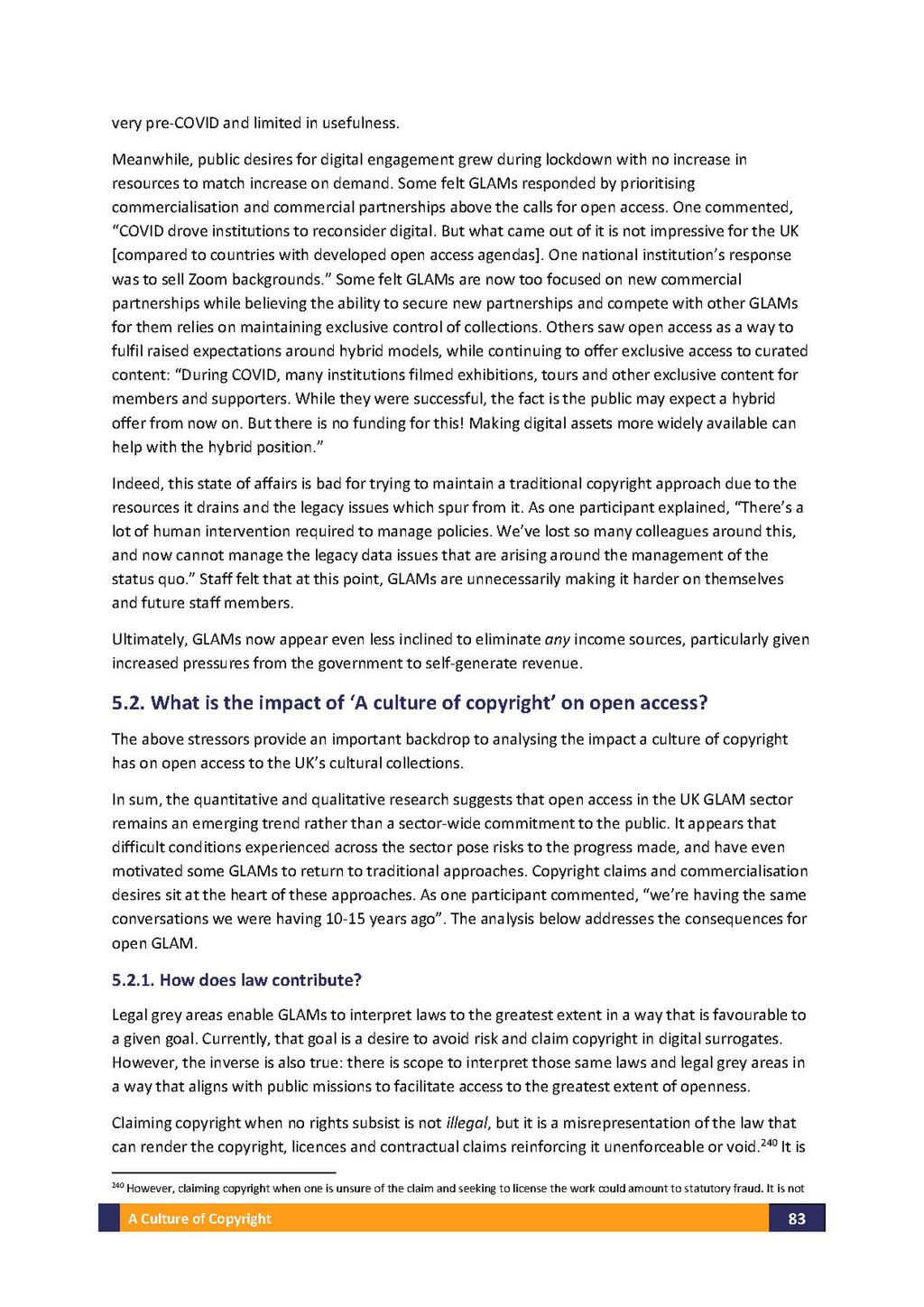very pre-COVID and limited in usefulness.
Meanwhile, public desires for digital engagement grew during lockdown with no increase in resources to match increase on demand. Some felt GLAMS responded by prioritising commercialisation and commercial partnerships above the calls for open access. One commented, "COVID drove institutions to reconsider digital. But what came out of it is not impressive for the UK [compared to countries with developed open access agendas]. One national institution's response was to sell Zoom backgrounds." Some felt GLAMS are now too focused on new commercial partnerships while believing the ability to secure new partnerships and compete with other GLAMS for them relies on maintaining exclusive control of collections. Others saw open access as a way to fulfil raised expectations around hybrid models, while continuing to offer exclusive access to curated content: "During COVID, many institutions filmed exhibitions, tours and other exclusive content for members and supporters. While they were successful, the fact is the public may expect a hybrid offer from now on. But there is no funding for this! Making digital assets more widely available can help with the hybrid position."
Indeed, this state of affairs is bad for trying to maintain a traditional copyright approach due to the resources it drains and the legacy issues which spur from it. As one participant explained, "There's a lot of human intervention required to manage policies. We've lost so many colleagues around this, and now cannot manage the legacy data issues that are arising a round the management of the status quo." Staff felt that at this point, GLAMS are unnecessarily making it harder on themselves and future staff members.
Ultimately, GLAMS now appear even less inclined to eliminate any income sources, particularly given increased pressures from the government to self-generate revenue.
5.2. What is the impact of 'A culture of copyright' on open access?
The above stressors provide an important backdrop to analysing the impact a culture of copyright has on open access to the UK's cultural collections. In sum, the quantitative and qualitative research suggests that open access in the UK GLAM sector remains an emerging trend rather than a sector-wide commitment to the public. It appears that difficult conditions experienced across the sector pose risks to the progress made, and have even motivated some GLAMS to return to traditional approaches. Copyright claims and commercialisation desires sit at the heart of these approaches. As one participant commented, "we're having the same conversations we were having 10-15 years ago". The analysis below addresses the consequences for open GLAM.
5.2.1. How does law contribute?
Legal grey areas enable GLAMS to interpret laws to the greatest extent in a way that is favourable to a given goal. Currently, that goal is a desire to avoid risk and claim copyright in digital surrogates. However, the inverse is also true: there is scope to interpret those same laws and legal grey areas in a way that aligns with public missions to facilitate access to the greatest extent of openness.
Claiming copyright when no rights subsist is not illegal, but it is a misrepresentation of the law that can render the copyright, licences and contractual claims reinforcing it unenforceable or void.[1] It is
- ↑ However, claiming copyright when one is unsure of the claim and seeking to license the work could amount to statutory fraud. It is not illegal per se, but doing so by making a false representation to obtain monetary gain opens the door to illegality and a potential criminal investigation. See Ronan Deazley and Robert Sullivan 'Copyright, Licences, and Statutory Fraud (2011) Journal of Media Law 3(2): 287-303; Jason Mazzone, Copyfraud' (2006) New York University Law Review 81(3): 1026-1100
